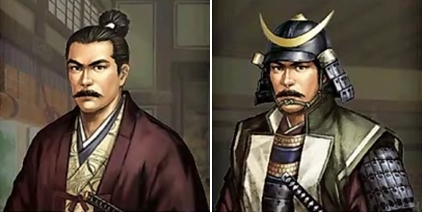
If you can, strike me." Then he started to walk around he dojo. O-Sensei felt that the Karate sensei was making light of him and said: "You are thinking that you can strike me, aren't you?" Sodeyama answered: "Yes." O-Sensei then responded: "I see. Sodeyama Sensei laughed to himself thinking that this Aikido was being performed by such an old man.

Since he did not have anywhere to go he came to Konishi Sensei. Sodeyama Sensei came back to Japan after the war. I couldn't strike him even once." I was amazed that there was someone that even Sodeyama Sensei couldn't strike. I thought there must be something else.Īt that time, a former Karate sensei of the Butokukai named Sodeyama who was running Konishi Sensei's dojo and also teaching there came up to me and said: "I met someone who is like a ‘phantom'. I was practicing Karate with Konishi Sensei but I also felt the limitation of Karate. My teacher was Konishi Sensei of Jinen-ryu who had practiced Karate longer than anyone else at that time. The kanji for this kata may also be pronounced aoyagi. The term also implies great strength, for the willow does not break under the force of the wind. Ryu means willow in English, and just like a willow will bend with the wind, so should the martial artist practicing this kata.

All these factors were considered in the process of developing the kata.Īs a result of the collaboration between three great masters, the Seiryu kata, contained the essence of both aikido and jujitsu, going with the force instead of directly opposing an opponent's attack. At the time, a woman's life was defined by cultural customs, though both sexes wore kimono and used geta.

Another factor which greatly influenced the kata was the female position in Japanese society. Also a woman's training was normally executed from a natural (higher) stance. Ueshiba Sensei strongly felt that the kata should be modified based on the gender of the practitioner, because of the need to protect very different sensitive areas. As they worked to finalize the kata, they shared it with Ueshiba Sensei, who approved some sections, but advised certain changes. Together, they developed a karate kata that incorporated the essence of both their styles. His first step in fulfilling the Army's request was to ask Mabuni Sensei to help him develop standardized training methods, to help the students remember the techniques. Konishi Sensei was asked by the commanding general of the Japanese Army to develop women's self-defense techniques. At this time, the Japanese government was largely controlled by top officers of the Imperial Army. During this period, Konishi Sensei, Ueshiba Sensei, Mabuni Sensei, and Ohtsuka Sensei were training together almost daily. In about 1935, Konishi Sensei developed another kata - Seiryu. The three kata became known as Tai Sabaki Shodan, Tai Sabaki Nidan, and Tai Sabaki Sandan. After the demonstration of this kata by Konishi Sensei, Ueshiba Sensei remarked that, "The demonstration you did just now was satisfactory to me, and that kata is worth mastering." Later, Konishi Sensei developed two other kata based on the principles of Tai Sabaki. Though the new kata did not contain any complex movements, it consisted of a chain of actions, with no pause after each action. He based this kata on karate, but incorporated principles found in the teachings of Ueshiba Sensei. Thus, he requested that he be allowed to continue training in karate, intending to develop the techniques so that it would be acceptable to the great teacher.Īfter many months of research and training, Konishi Sensei developed a kata called Tai Sabaki (Body Movement).

Konishi Sensei felt that karate still had much value and that he had the responsibility to develop it. This comment came as a blow, since Konishi Sensei believed in karate and that held Ueshiba Sensei's opinions in the highest regard. However, Ueshiba Sensei remarked that Konishi Sensei should drop such nonsense for such techniques are ineffective. Having already trained in karate for a number of years, Konishi Sensei demonstrated the kata Heian Nidan (which he learned from Funakoshi Sensei) to Ueshiba Sensei. Konishi Sensei carried this opinion throughout his lifetime. Konishi Sensei considered Ueshiba Sensei to be the best martial artist he had ever known. Konishi Sensei and his wife also studied under Morihei Ueshiba, who was still teaching Daito Ryu Aikijujitsu at that time.


 0 kommentar(er)
0 kommentar(er)
